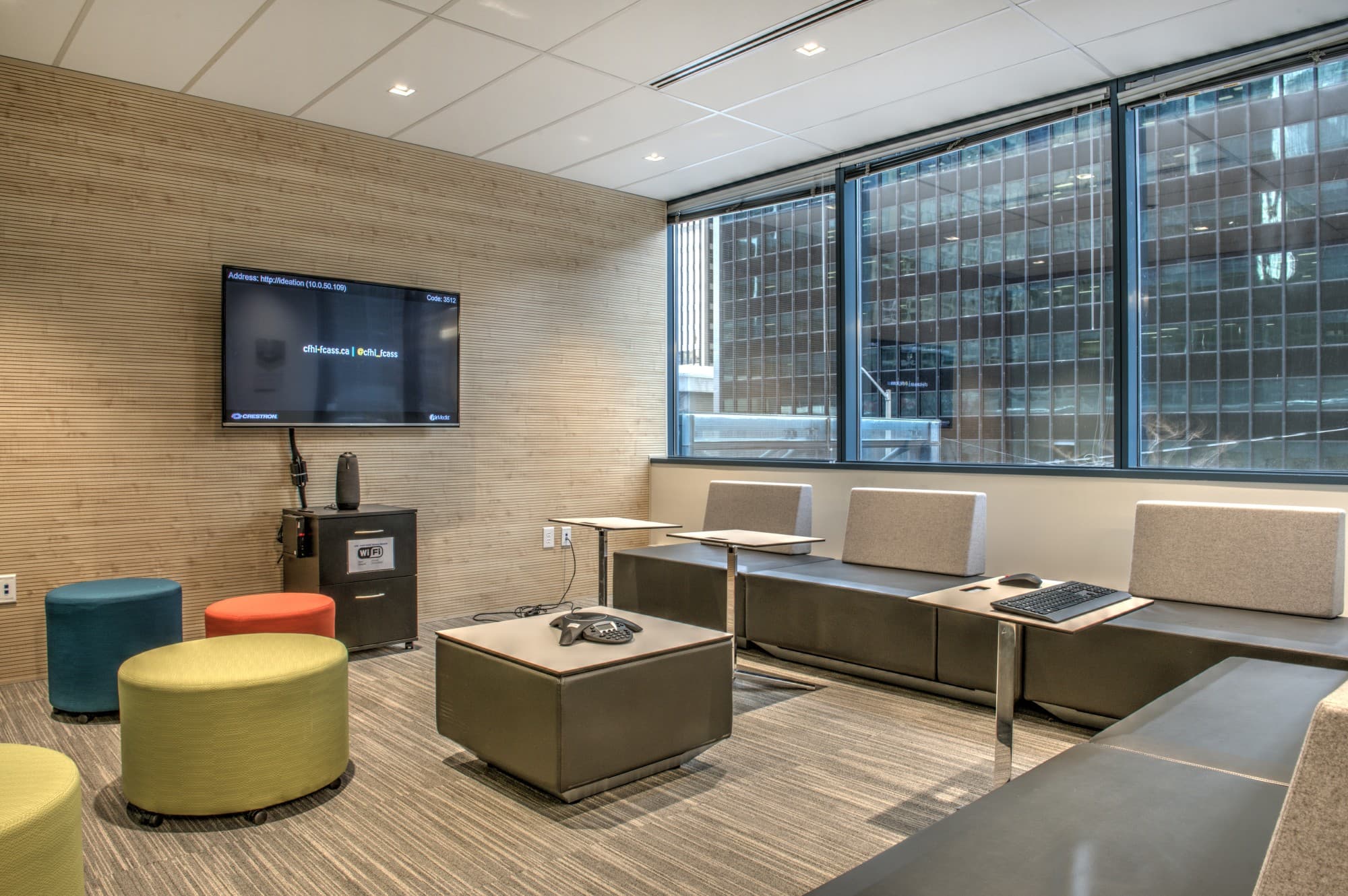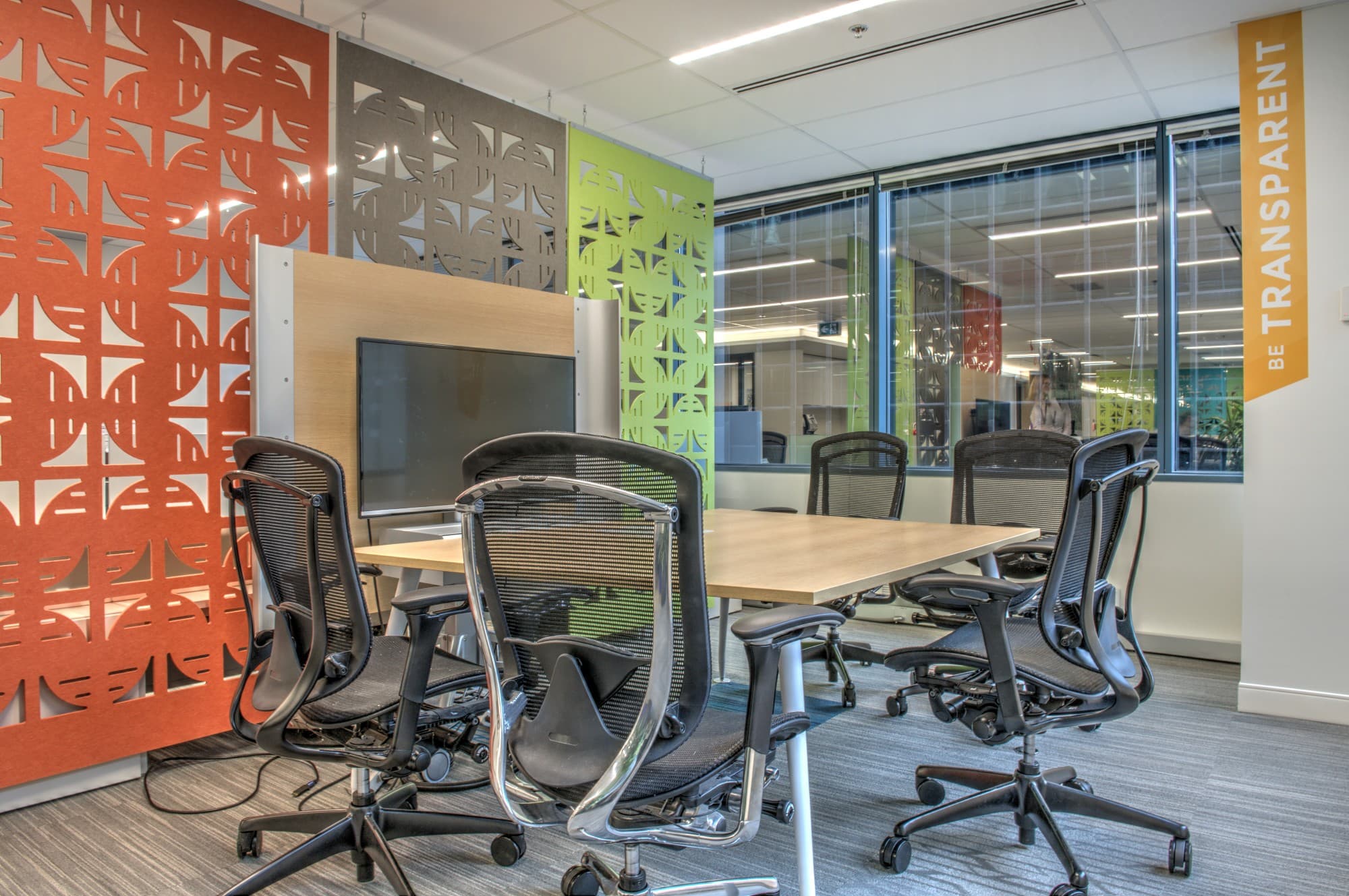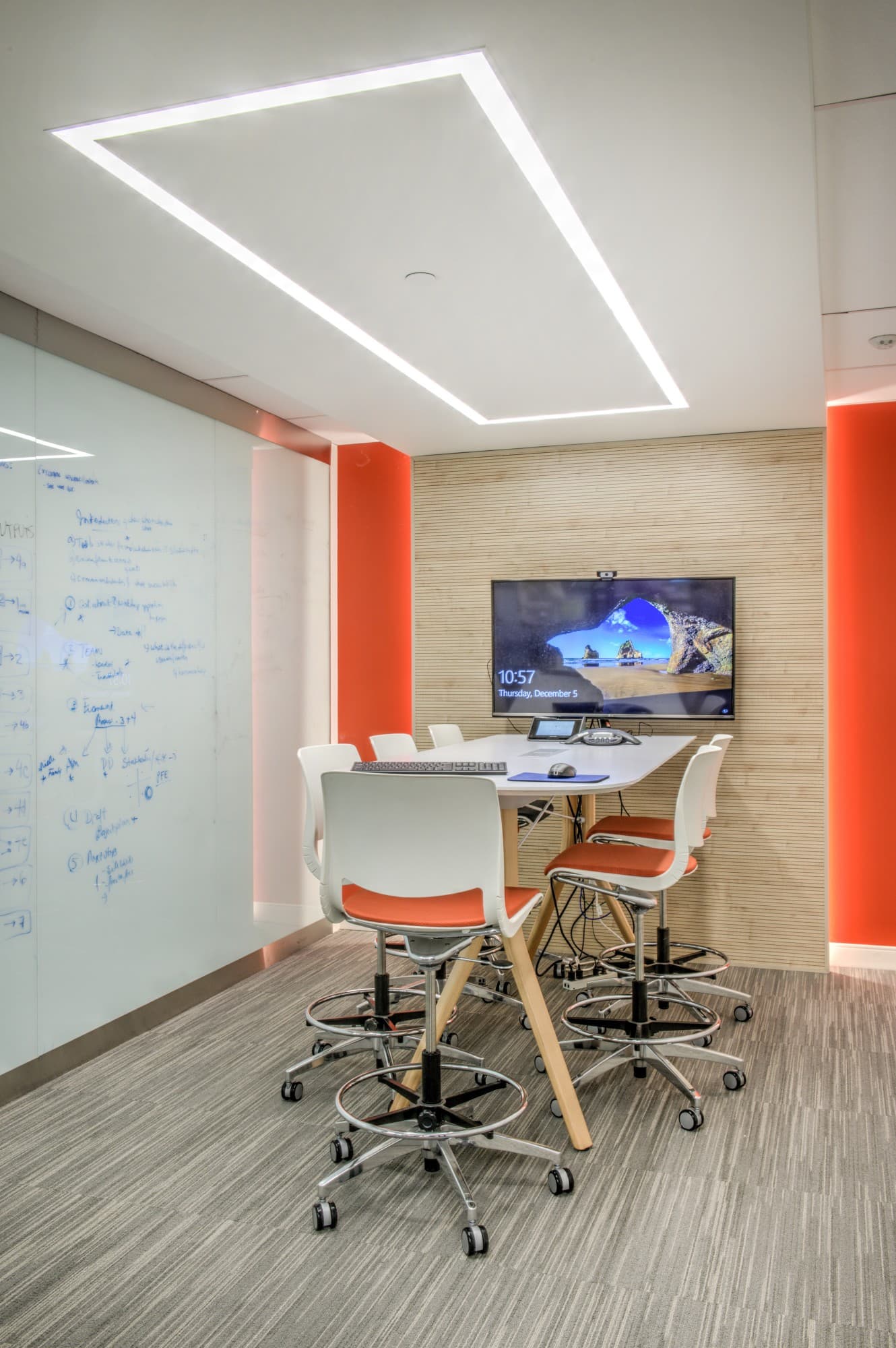Put People First is literally one of the Canadian Foundation for Healthcare Improvement (CFHI) pillars. This core value – writ large on an orange office pillar – is at the heart of the not-for-profit’s work and is built into the very design of its workspace.
When Nancy Quattrocchi, CFHI’s vice-president of corporate services, was planning the organization’s move to a larger office space on the second floor of 150 Kent St., she envisioned a healthier work environment that was modern, bright and more in line with CFHI’s mandate.

“I wanted something that reflected our core values: put people first, collaborate for improvement, be transparent and focus on results,” said Quattrocchi. “I was very much looking for a designer who was innovative and who had demonstrated the ability to truly listen to the client.”
LWG Architectural Interiors was the right fit.
“Our entire business is about collaboration and bringing the best people together to identify and advance innovations in healthcare,” said CFHI executive assistant Heather Scott. “Our work is about bringing people together, and the great thing about LWG is that they captured that value in their design.”


Workspace evolution
“There seems to be a misconception that interior designers work in a creative bubble, then present their ideas and hope the clients buy in,” said Bryan Wiens, an interior designer and principal at LWG. “Our job is to learn about the client – their mandate, work culture, how they operate and where they want to be five years from now. They need to feel that the space describes them.”
“LWG designed the workspace around the type of work we do, instead of the other way around. And it worked.”
Nancy Quattrocchi, vice-president of corporate services, Canadian Foundation for Healthcare Improvement
Over its 25-year history, LWG has evolved to become the largest interior design firm in Ottawa and one of the busiest with 140 active projects a year. Early in 2020, LWG announced its merger with Design Associates, a leading Canadian commercial force in interior design and planning. The acquisition expands the LWG team to 24 designers, including the three principals: David Gibbons, Marc Letellier and Wiens.
“We share common values in delivering excellence to our clients and fuelling the profession,” said Wiens. “Their team has already become part of our family of designers. That’s a lot of talent working under one roof for our clients.”
The company has seen a lot of changes in work environments since opening in 1984. Employees are no longer confined to working at a desk with a large computer terminal. They move within the office space to different collaborative work areas and are increasingly choosing to work from home.

“Technology has changed the way people work. It is all-encompassing,” said Letellier, who led the CFHI design project. “Our design solutions respond to how people work and how they want to work at their organization. Sometimes the whole team gets involved in the process. That is why the CFHI space works and shows so well.”
Flexibility spaces
Quattrocchi asked CFHI employees what their ideal office space would be. She compiled their feedback into a list of wants she gave Letellier and interior designer Gabrielle Lemaire. They delivered on every one, including using Canadian-made products, as they managed and coordinated the entire project from design through to construction completion including branding and furniture acquisition.
The broader project team also included McKee Engineering providing electrical and mechanical design as well as Cassidy Construction.
Flexibility and movement was important to CFHI. So, LWG created flexible spaces. They anchored enclosed offices and meeting rooms in the centre of the space and allowed for open-concept employee sit/stand desks to be placed around the perimeter, close to the windows. To give the interior offices natural light, LWG incorporated glass walls that face into the main areas. Meeting rooms were equipped with screens for teams to work collectively on projects. Whiteboard walls were installed in each room to facilitate brainstorming sessions.

LWG also designed nooks complete with high-backed couches and screens to further promote staff collaboration.
“It’s a wonderful space to be creative. So much of our work is done by consensus and this space reinforces that ability,” said Meghan McKenna, one of CFHI’s improvement leads.
Sustainability
The neutral-toned open concept areas were divided by hanging neon green, aqua blue, orange and grey panels. These thick, felt panels featured stylized cut-out designs that don’t block out light but do act as sound buffers. They are made from recycled pop bottles.
Elsewhere, the LWG team initiated a retrofit of all fluorescent lighting to LEDs to provide a more energy efficient and flexible lighting solution.

Building sustainable, environmentally-friendly interiors has always been integral to LWG’s design philosophy. They are pioneers of sustainable design.
Gibbons said LWG looks at sustainably sourced materials, ensuring furniture, carpet and design features are made of recycled materials and don’t use glues that off-gas. This was also important for CFHI.
“We don’t put anything into a space without knowing where it came from or what is going to happen to it,” said Gibbons.
In addition, when the company demolishes existing construction, most of it is diverted from landfills. Glass, steel studs and drywall get recycled. The company’s principals have always insisted that its contractors and tradespeople employ strong recycling practices.

When LWG built its own workplace in 2006, they followed the green building certification model known as Leadership in Energy and Environmental Design (LEED). It was ahead of its time, becoming the first LEED commercial interior in Ottawa.
LWG incorporated the same LEED principles and practices in the CFHI design to make it an energy efficient, enviro-friendly, healthy workplace.
“It’s all about putting people first – energy levels, lighting, ergonomics, air quality are all important, nonfinancial factors,” said Quattrocchi. “LWG designed the workspace around the type of work we do, instead of the other way around. And it worked.”

